.
Written by Rowaida Abdelaziz | Photography by Amr Alfiky
Jan. 25, 2022
.
Mohammed Saleh never got a chance to say goodbye to his son.
In 2018, Saleh petitioned for a visa so his son — Ayman, who lived in Aden, Yemen, and was 20 at the time — could come to the United States to seek treatment for a congenital heart condition. He wanted to hold Ayman, take him to his doctor appointments, and give him a chance at life. That opportunity didn’t exist in Yemen, where less than half of all health facilities were functioning after years of civil war.
The last time Saleh saw his son was during a visit to Yemen in June 2019. He still hoped then they could reunite in New York, where Saleh has lived for nearly three decades.
But then-President Donald Trump’s ban on travel from several Muslim-majority countries, issued in January 2017, meant Ayman’s visa application was delayed indefinitely. Saleh begged lawyers and advocates for help, but the ban made legal recourse all but impossible.
Ayman’s application was still being processed when he died at a Yemeni hospital in May 2021, during Islam’s holy month of Ramadan.
A year-long HuffPost investigation found hundreds of cases of Trump’s ban changing the lives of Muslims, both inside the United States and around the world. Families have been ripped apart. Educational and employment opportunities have been denied, maybe forever. People have missed milestones like birthdays, funerals and weddings. Some gave up on coming to the U.S. and instead relocated to another country, while others have been trapped in war zones.
.
.
HuffPost collected data throughout 2021 on people who have been affected by the Trump-era travel ban, which included reaching out to American organizations that work with Muslim communities, putting out open calls on social media, and contacting lawyers and activists. An abridged and anonymized version of our data lives here, and our charts were built with Datawrapper.
The State Department’s Bureau of Consular Affairs published monthly and quarterly reports after the 2017 Supreme Court ruling, which included cumulative data on versions of the ban that were implemented between Dec. 8, 2017, and Jan. 20, 2021. However, that data is somewhat limited because it does not show monthly breakdowns of denials in 2017 and 2018.
.
.
The State Department’s Bureau of Consular Affairs tallied 41,876 visas denied between December 2017 and January 2021, but no single agency or organization has collected comprehensive data on how tens of thousands of people, many of whom were American Muslims, were affected. But over the last year, HuffPost collected 874 stories of people who, like Saleh, are still feeling the impact of Trump’s travel ban five years later.
In an attempt to account for the ban’s far-reaching implications, HuffPost spoke to lawyers, immigration groups and advocacy organizations; interviewed dozens of families; and sifted through nearly a hundred lawsuits. These numbers are not comprehensive due to legal and practical limitations — including the fact that not all impacted individuals could or did seek legal help — but the analysis is the first of its kind and provides an in-depth glimpse into the physical, mental and economic toll of those denials.
The nearly 900 cases we cataloged involve both parents being apart from their children and romantic partners being separated. In more than 100 cases, people reported medical hardship, including the inability to help a family member with a health problem and trauma, as an effect of the ban. In nearly 300 cases, or one-third of our data, the family or person impacted faced more than one extreme hardship due to the ban.
There were 11 cases like Saleh’s, in which separation meant never again seeing a loved one because they died while the ban was in place.
President Joe Biden signed an executive order formally ending the travel ban as one of his first acts as president, a move immigration groups and affected families applauded. And in March 2021, the U.S. State Department announced that people who had been denied visas due to the ban could seek a revised decision or reapply.
But those applicants joined a backlog of nearly half a million cases and a painfully long process that the pandemic has further slowed. In January 2020, there were about 75,000 applications pending with the State Department’s National Visa Center. By February 2021, the number had increased six-fold, to 473,000.
Even Biden’s reversal left out one large group of visa applicants: those awarded so-called diversity visas, which grant up to 50,000 people from countries with low levels of representation an opportunity to migrate to the U.S. through an annual lottery. Several thousand people from Muslim-majority countries who won visas were not able to use them due to the ban and aren’t allowed to use them now. They can reapply, but advocates said the chances of winning this rare opportunity again are slim.
“For real people and real families, being stranded in dangerous conditions can be life and death. It means permanent emotional harm,” said Cody Wofsy, a staff attorney at the ACLU Immigrants Rights Project. “Even though the policies are now gone, you do see the effects continuing to ripple out in people’s lives for years.”
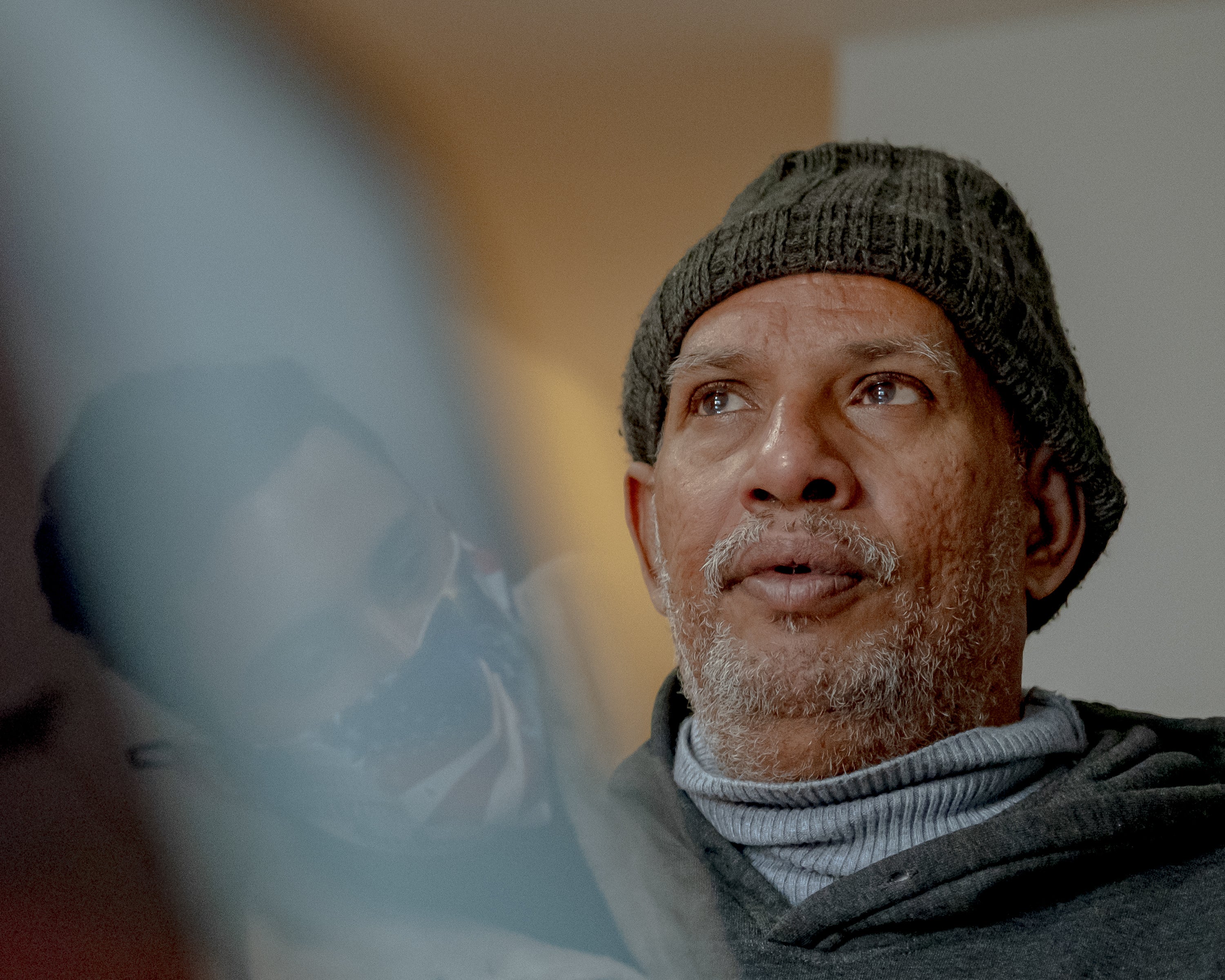
One Family’s Fight
Saleh came to New York, where his own father lived as a citizen, as a green card holder in 1995. Two years later, he met and married his second wife, Amina, during a trip to Yemen. Together, they had five children: Akram, Fares, Ayman, Omar and Bayen.
Saleh ping-ponged between the U.S. and Yemen, but his family stayed behind. He opened a deli in Queens with his cousin and sent money to his family. Then, in 2017, his wife died of complications due to high blood pressure. His children were suddenly alone and very far away.
Trump had just been sworn in as president, and quickly made good on his campaign promise of “a total and complete shutdown of Muslims entering the United States.” On Jan. 27, 2017, just days after his inauguration, he signed a directive placing a 90-day ban on people from seven Muslim-majority countries: Iran, Iraq, Libya, Somalia, Sudan, Syria and Yemen. He also suspended the resettlement of refugees for 120 days.
The move prompted immediate outrage. Thousands of politicians, advocates and lawyers joined protests at airports including in New York, Los Angeles, Boston, Dallas and Washington, D.C., where both immigrants and legal permanent residents were being detained. Across the globe, travelers panicked about whether they’d be able to enter the U.S. Refugees who had been booked for travel to the United States had those plans immediately canceled.
A federal judge in New York temporarily blocked the order for those who had already arrived in the country or who were in transit with valid visas, ruling they couldn’t be deported after they landed.
That was just the first of many rulings as immigrant and civil rights groups challenged the ban. Trump signed a new version of the ban in March 2017, which critics labeled “Muslim Ban 2.0.” It exempted anyone who already had a visa or green card and removed Iraq from the list. The 4th Circuit of Appeals upheld the lower court’s injunction that May, however, keeping the order on hold.
Trump tried again in September 2017, this time removing Sudan from the list and adding Chad, North Korea, and certain members of the Venezuelan government. In June 2018, the Supreme Court ultimately upheld that version in a 5-4 decision, concluding that the president had the authority to implement the order on the basis of national security.
“It was a very intense litigation up and down to the Supreme Court and courts all over the country,” Wofsy said. “Unfortunately, the Supreme Court gets the final say, and it was extremely disappointing and distressing that they blessed what everybody knew was just blatant discrimination, motivated by President Trump’s very clearly expressed anti-Muslim animus.”
As the legal battles dragged on around the U.S., Saleh sought legal help to petition for visas for his children back in Yemen. He also learned that he was qualified to become a naturalized U.S. citizen, filed to move forward with that process, and gained citizenship. He hoped doing so would help make a case for his children to enter.
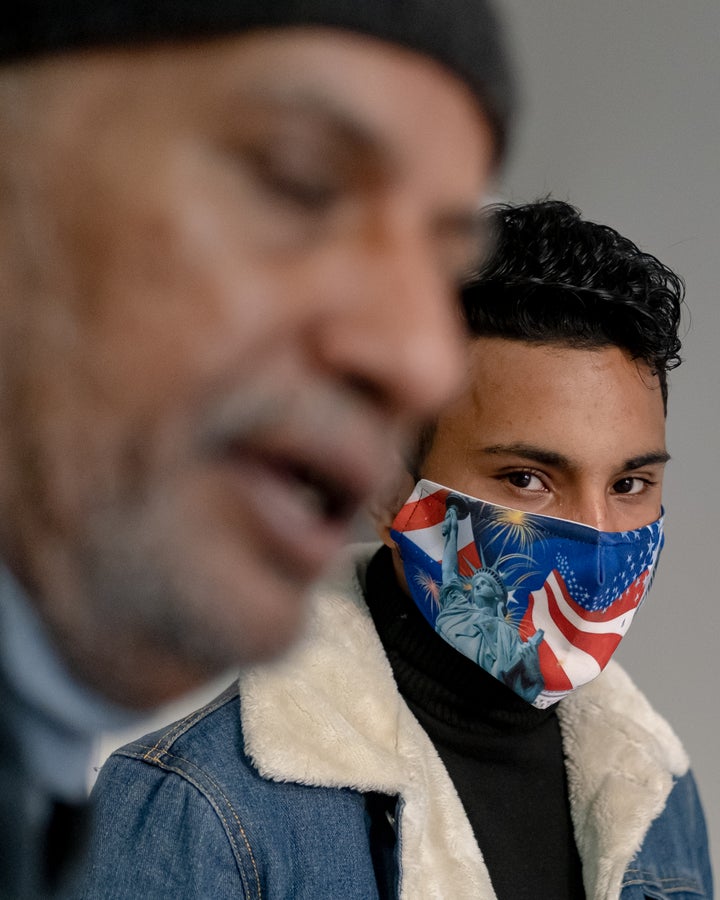
There are several ways children of citizens born outside the country can acquire citizenship under U.S. law. Eligibility relies on several factors, including the child’s year of birth, the immigration status of both parents, and the number of years a citizen parent has resided in the U.S.
Omar and Bayen qualified for U.S. citizenship, but were unable to secure visas to board a plane to the U.S. Fares and Akram were left in limbo awaiting interview appointments at the embassy in Djibouti so that they could enter as permanent residents. And Saleh’s eldest child, Khaled, was told to apply directly to the United States Citizenship and Immigration Services since he was older than 21 and not eligible to apply through his father. The process for all five was long, complicated and riddled with setbacks.
HuffPost’s investigation found at least 341 other cases in which parents have been separated from their children. In another 321 cases, the ban put couples on different continents for years.
The impact behind these numbers is unquantifiable. Many said their lives have been permanently upended, with experiences ranging from emotional distress caused by extended separation from loved ones to loss of jobs and investments. One woman was forced to give birth to her child without her husband, a Somali national who was unable to obtain a visa due to the ban in 2018. That same year, a Yemeni American died by suicide after his wife and two eldest children were denied a visa because of the ban. Numerous students and academics said they were unable to enroll in universities to which they’d been accepted. Many couples were unable to start a family while forced apart from their spouses.
Saleh remarried in 2019, to an Ethiopian woman living in Yemen. She had been a neighbor and had since taken in his children. He also petitioned for her to join him in the U.S., but entered the same precarious process.
The consequences of the ban were all around him: the emptiness of his home without his children, the endless calls with lawyers and officials. He’d go to bed every night exhausted from weeping.
He lived in constant fear of never seeing his family again — either because the American immigration system wouldn’t allow it or because they’d be killed by one of the bombs raining down in Yemen.
Yemen was one of the world’s poorest countries even before the war began in 2014. The United Nations estimates that more than 10,000 people have been killed in Yemen since then, and more than 24 million people require humanitarian assistance. The years of war have decimated the health care system, and supplies, medical care, and access to drinking water and sanitation are unstable. Treatable diseases like cholera have killed thousands of people and infected a million more.
The U.S. has provided billions of dollars in weaponry and intelligence support to Saudi Arabia, which backs the Yemeni government. This has further escalated the humanitarian disaster. As the U.S. closed itself to Yemenis despite its complicity in the war, many Yemeni felt particularly betrayed.
Julia Gelatt, a senior policy analyst at the Migration Policy Institute, a nonpartisan think tank based in Washington, said families applying for U.S. visas from conflict zones face higher levels of scrutiny.
“The U.S. government highly vets immigration applications from all over the world. But that vetting can get very complicated and take a very long time for people from countries where there are greater security concerns or greater skepticism about the government’s capacity to manage records,” Gelatt said.
The ban on Muslim-majority countries including Yemen and Iran further complicated the vetting process and led to more denials, she added.
Permanent residence visas issued to people from Iran fell by 81% between 2016 and 2018, the first year the travel ban was fully implemented, according to MPI. For people from Yemen, the number of immigrant visas issued over that same period fell by 91%.
Yasin Hassan, an immigration case manager at the Yemeni American Merchants Association in New York who has been helping Saleh with his case, said Yemenis face distinct and arduous challenges. There’s a higher burden of proof for family eligibility and aggressive interrogation techniques for routine consular services, which can result in yearslong delays.
“In the eyes of the government and immigration, those systems don’t trust the population and will often question basic information,” Hassan said. “Because of that, cases have been significantly delayed.”
Of the people in the HuffPost dataset whose nationalities are known, almost 15% are of Yemeni origin. In 2021, the Biden administration extended Temporary Protected Status for approximately 1,700 Yemenis already in the United States due to the worsening humanitarian and economic conditions under the war, but experts have argued that Biden hasn’t done enough to end U.S. support for offensive operations in Yemen.
“The systems still have a lot of this discrimination at a very fundamental level, no matter what administration we have, no matter who is president,” Hassan said. “It’s about how the system functions, and sadly, I don’t think a change in administration is solely sufficient to alter that.”
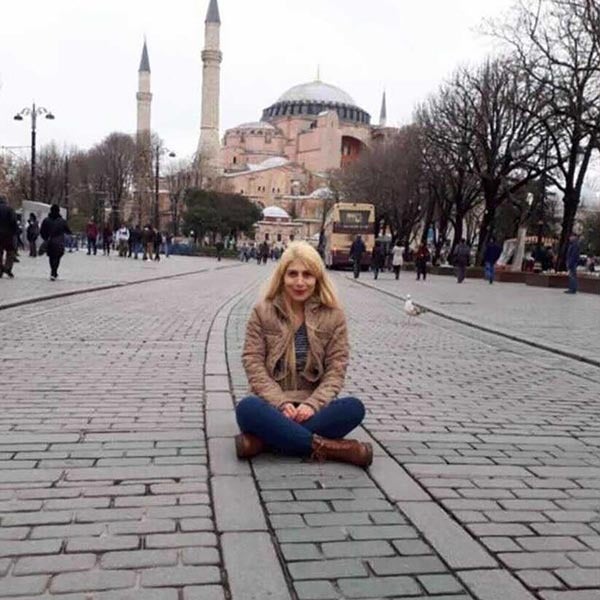
A One In A Million Chance
Leyla Abbasnezhad, a 31-year-old Iranian, considers herself a lifelong student. Her parents are both retired elementary school teachers who always told her education was the key to success. Her mother taught her math while her father read her Persian poems and literature, and Abbasnezhad excelled at both.
She enrolled at the Islamic Azad University in Mashhad, one of the largest private universities in the world with over a million students across its international campuses.
Abbasnezhad earned a bachelor’s and a master’s degree, graduating at the top of her class. In 2017, she enrolled in a program to earn her doctorate in biomedical engineering, in hopes of returning to the university as a professor.
That same year, Abbasnezhad threw her name in the American Diversity Immigrant Visa Program lottery, hoping to immigrate to the U.S. and continue her studies. This program, established in 1990, randomly selects up to 50,000 people from countries with low levels of representation in the U.S. for a visa. Since 2005, more than 200 million people from countries around the world have applied for the program, including more than 11.8 million people during the 2021 fiscal year. During the 2018 fiscal year, the most recent available numbers to date, 115,968 lottery winners were chosen, among them only 4,500 were Iranians.
Immigration from Iran saw an uptick after the revolutions of the late 1970s, but Iranians are a relatively small slice of the overall immigrant population of the U.S. Just over 12,000 of the 1 million international students in the U.S. each year come from Iran. But among those in HuffPost’s dataset, almost 40% had Iranian origins.
Abbasnezhad had hoped to become one of the lucky visa winners.
Her chance came in May 2017, when she received an email informing her that she had won a spot for the following year. She was assigned an interview date at the consulate in neighboring Turkey, where she planned to receive her visa and then board a plane to America.
Abbasnezhad quit her Ph.D. program and bid farewell to her friends and family. She enrolled in English classes. Her family threw her a goodbye party. Abbasnezhad and her parents spent thousands on flights, hotels and fees, and headed to Ankara for her interview scheduled on Dec. 7, 2017. Armed with folders of paperwork and a single piece of luggage, Abbasnezhad was ready to begin her new life in America.
But during her appointment, Abbasnezhad said embassy staff told her they could not grant her the visa due to Trump’s travel ban. They also said there was nothing she could do.
She walked out of the office, overcome by tears.
“I will never forget seeing my father crying. I could see how disappointed he was at that moment,” she said.
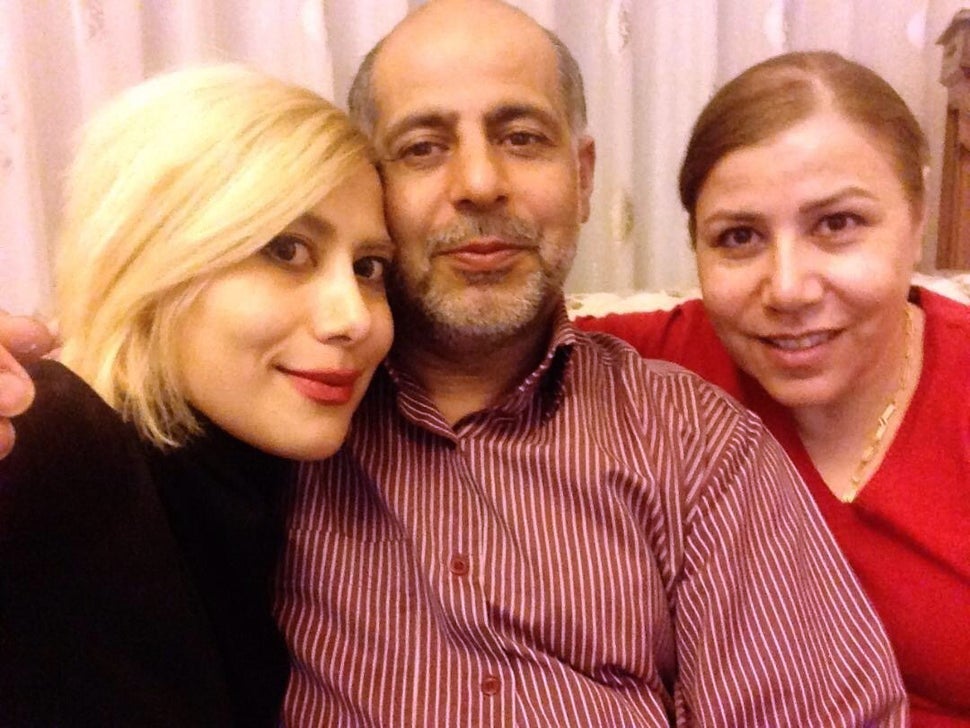
A week after her interview, the embassy asked her for more paperwork, and for a moment Abbasnezhad held onto a glimmer of hope. But in January 2018, she received a formal rejection email that cited Trump’s order. The American government had offered, and then snatched back, her best chance to go to the U.S.
“They gave us this hope. They gave us this dream,” she said. “They made this future possible for us in our minds and then it was all destroyed with a piece of paper.”
She felt betrayed.
“We just wanted to have the opportunity to come to America, and then after that, we would make it on our own,” she said. “We didn’t want anything more.”
Abbasnezhad’s life spiraled. She fell into a depression. If she wanted to reenroll in her Ph.D. program, she would have to take the entrance exam again. The stress of the rejection took a toll on her health, and her hair started to fall out. She regularly broke out in hives and rashes. She has had to take medication to help with anxiety and insomnia.
When Biden repealed the ban in January 2021, people across the globe celebrated. Visa applicants who had been denied due to the ban could seek adjudication without having to resubmit their applications or pay additional fees. Any previous denials due to the ban would not negatively affect new applications.
But there was no recourse for those who had won a diversity visa between 2017 and 2020. Tens of thousands would have to reenter the lottery and may never get the chance to come to the U.S. Diversity visa seekers from African countries were also impacted, as Trump expanded the travel ban in 2020 to include Myanmar, Eritrea, Kyrgyzstan, Nigeria, Sudan and Tanzania. The change primarily impacted immigrant visas, specifically people seeking to reside in the United States and diversity visa seekers.
Nearly 12 million people applied to the program in 2021, according to the State Department, and just 0.2% got a visa. The program also limits how many people from one country can get a diversity visa to 3,840. Last year, 759,903 Iranians applied.
Organizations including the American Civil Liberties Union and the National Iranian American Council Action are lobbying the Biden administration to allow past lottery winners to obtain a visa.
“The U.S. has made a commitment to offering these visas to these people who would benefit tremendously from it, only to have a kind of snatched away by a discriminatory immigration system,” said Ryan Costello, the policy director at NIAC. “So many people put their life savings on the line, quit their jobs, traveled to war zones in some cases to have this opportunity.”
Legislative efforts to address the issue have also stalled in Congress.
Abbasnezhad is still living in limbo. She hasn’t picked up work or school, holding out hope that Congress will honor her visa. She has joined various group chats with other diversity visa winners also following the political debates and litigation, and she checks her phone constantly. Some other members of those chats have moved on, she said, but she can’t yet.
“Sometimes I think this pain will never stop,” she said.
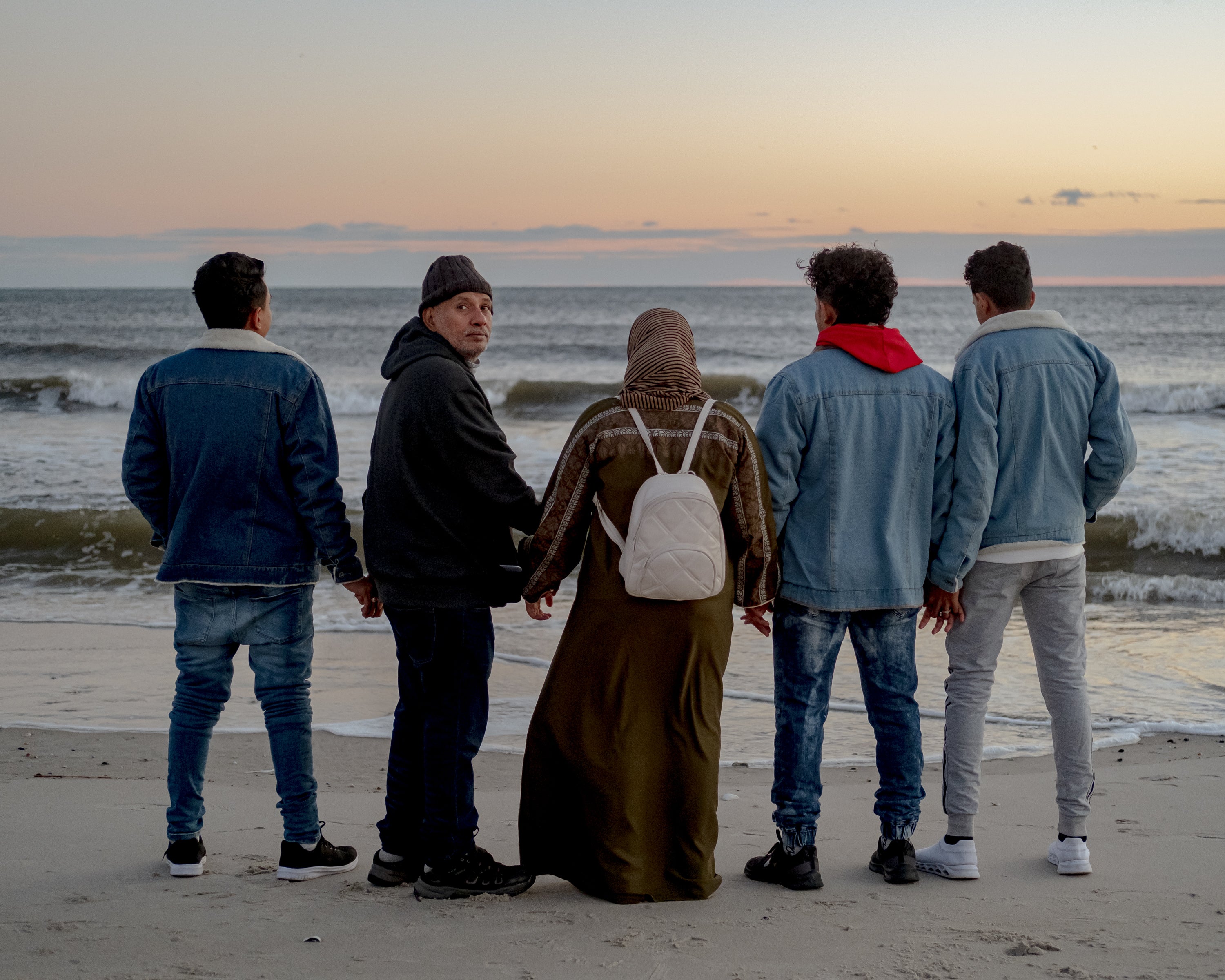
Counting Down The Days Until Reunification
Saleh spent nearly three years in a similar limbo. His dark brown eyes swell up with tears as he talks about it, and his salt and pepper beard hides the wrinkles that have crept across his face.
He spent nearly every day on the phone with one lawyer and consular official after another, attempting to use his limited English to battle an immigration system that seemed hellbent on keeping his family apart.
In August 2021, he went back to Yemen, determined that this time he would not come back without his surviving children. It had been close to a year since Biden rescinded the ban. Saleh spent nearly $2,000 on five flights from Yemen to neighboring Djibouti, the closest country with a functioning U.S. embassy since the one in Yemen closed in 2015.
For two months, Saleh and his children lived in a small apartment in Djibouti that they rented for $1,000 a month. He still spent all his time on the phone — with lawyers in the U.S., the embassy and relatives who could translate for him. Each time he visited the embassy, he was sent away with requests for more paperwork, documentation or fees. He met Yemeni families who had been waiting on American visas in Djibouti for more than a year. His family back in the U.S. begged him to return, but Saleh was not going to board a flight without his children.
Finally, on Nov. 22, 2021, Saleh’s children were granted visas to enter the U.S., two as American citizens and two as permanent residents. His wife is still waiting for her visa.
“We never imagined that we would leave Yemen,” said Omar, now 17. The feeling he had once he was seated on the plane with his father and siblings was nothing short of “pure happiness.”
Later that month, Saleh was back at his dining room table, the only piece of furniture in the living space of a new apartment he secured for his reunited family. He wore a gray sweatshirt and hat, while the cold November wind hit his window. Omar and Bayen sat beside him. Omar placed his hand on his father’s shoulders, attempting to comfort him and remind him of his presence.
Life in Yemen brought unspeakable pain, Omar said, particularly after the death of their mother and brother. Bayen had been sent to live with her grandmother, while Omar, Akram, and Fares — still just teenagers — had to fend for themselves. Omar taught himself how to cook — how else would he and his brothers eat? At one point, Omar and Fares contracted malaria and were sick for weeks, left to care for one another. Saleh’s children have seen more than most adults, having escaped death too many times for their short lifetimes.
“Holding onto any hope while in Yemen was hard,” Omar said. “It felt that things got worse with each passing day.”
Now he beams with pride that he can make traditional Yemeni dishes and stews for his father.
He and Bayen, 15, are looking forward to enrolling in school, though they hope to master English first. Akram and Fares began taking shifts at their cousin’s deli a few blocks from their Queens home. Days after landing at John F. Kennedy Airport, Saleh took his children to Times Square. They roamed the bustling midtown, dazzled and exhilarated. They ate their first McDonald’s burgers and fries — Saleh prefers home-cooked meals, but he’s been eager to let the children try new things.
As we spoke, Bayen sat quietly in her chair, seemingly overwhelmed by her new surroundings. She spoke softly among the voices of men around her. She has her father’s eyes, elongated and dark brown, that lit up when she spoke about her newfound future.
“It’s stunning here,” she said, adjusting her striped hijab.
Saleh, too, still seems stunned. He misses his wife and Ayman, and can’t speak about them without breaking down. The pain is too raw, he said.
But with his children all sleeping under his roof for the first time in years, he started to feel a small sense of stability.
“They have a real future,” he said. “The world of possibilities is open to them.”
.
.
.
Credits
This project was produced with support from the Investigative Reporters & Editors’ Journalist of Color Investigative Reporting Fellowship.
Rowaida Abdelaziz, Nausheen Husain, Yasmin Nayrouz, Reid Thompson and Annie Labarca all contributed to this data analysis. Nayrouz, Thompson and Labarca, Syracuse University students, created the charts in collaboration with HuffPost, IRE and the S.I. Newhouse School of Public Communications at Syracuse University.
Editor: Kate Sheppard
Fact-checker: Georgia Gee
Photo Director: Christy Havranek
Photo Editors: Damon Dahlen & Chris McGonigal
Art Director: Isabella Carapella
Photographer: Amr Alfiky
If you have a similar story to share, reach out to rowaida.abdelaziz@huffpost.com
.
.
.
.